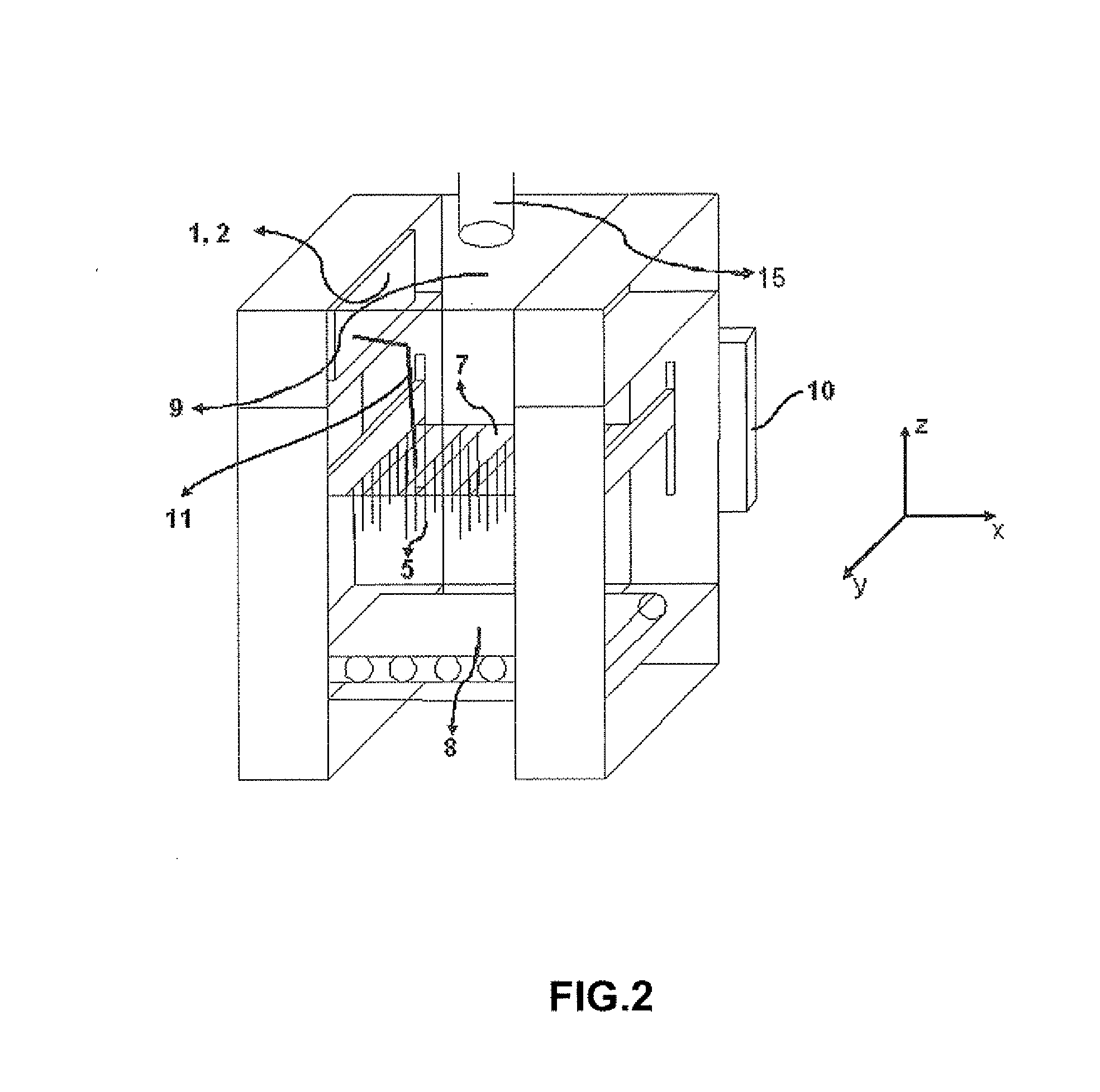Production and use of laminated nanofibrous structures
a nanofibrous and nanotechnology, applied in the field of nanofibrous structure production and use, can solve the problems of inability to obtain the large surface area required for many applications in an economic feasible way, increased amount of bleaching agent provided, system leakage of bleaching agent to gingiva, optional ingestion, etc., to achieve good control release and filtration properties, good overlap, good liquid uptake
- Summary
- Abstract
- Description
- Claims
- Application Information
AI Technical Summary
Benefits of technology
Problems solved by technology
Method used
Image
Examples
example 1
[0225]Polyester amide (PEA), obtained through synthesis from fatty acids, with molecular weight of about 20.000 g mol−1 was dissolved in chloroform to obtain a solution of 25% PEA. The solution was pumped to a set of 24 outlets with a multitude of multichannel peristaltic pumps, using a flow rate of 15 mL h−1 per outlet. In the spinneret an electrical field of about 1000 V cm−1 is applied over the outlets and the receiving surface in order to allow electrospinning of the polymer solution. The outlets were positioned in the triangle configuration of 4 rows of 6 outlets per row. Temperature control was performed at 298 K. The outlet surface was positioned under an angle of 10° relative to the receiving surface and the outlet surface moved perpendicular to the movement of the receiving surface. The speed of the receiving surface was 40 cm h−1, while the rate for the outlet surface is 1 cm s−1. After 2 hours of spinning a nanofibrous structure of 300 μm thick was obtained with a length ...
example 2
[0226]Poly amide 6 / 6 (PA66) with molecular weight of about 20.000 g mol−1 was dissolved in formic acid to obtain a solution of 14% PA66. The solution was pumped to 2 sets of each 24 outlets with a multitude of multichannel peristaltic pumps, using a flow rate of 2 mL h−1 per outlet. In the spinneret an electrical field of about 3.500 V cm−1 was applied over the outlets and the receiving surface in order to allow electrospinning of the polymer solution. The outlets were positioned in the triangle configuration of 4 rows of 6 outlets per row. Two spinnerets were used, each operational at a different distance between the outlets and the receiving surface. Temperature control was performed at 298 K. The first outlet surface was positioned at a distance of 4 cm, while the second was positioned at a distance of 6 cm from the receiving surface. The speed of the receiving surface was 60 cm h−1, while the rate for the outlet surface is 1 cm s−1. After 2 hours of spinning a nanofibrous struct...
example 3
[0228]Cellulose acetate (CA) with molecular weight of about 30.000 g mol−1 was dissolved in acetone / Dimetylacetamide 2:1 to obtain a solution of 14% CA. The solution was pumped to 2 sets of each 24 outlets with a multitude of multichannel peristaltic pumps, using a flow rate of 10 mL h−1 per outlet. In the spinneret an electrical field of about 850 V cm−1 was applied over the outlets and the receiving surface in order to allow electrospinning of the polymer solution. The outlets were positioned in the triangle configuration of 4 rows of 6 outlets per row. Two spinnerets were used, each operational at a different distance between the outlets and the receiving surface. Temperature control was performed at 298 K. The first outlet surface was positioned at a distance of 20 cm, while the second was positioned at a distance of 15 cm from the receiving surface. The speed of the receiving surface was 60 cm h−1, while the rate for the outlet surface was 1 cm s−1. After 2 hours of spinning a ...
PUM
| Property | Measurement | Unit |
|---|---|---|
| distance | aaaaa | aaaaa |
| distance | aaaaa | aaaaa |
| diameter | aaaaa | aaaaa |
Abstract
Description
Claims
Application Information
 Login to View More
Login to View More - R&D
- Intellectual Property
- Life Sciences
- Materials
- Tech Scout
- Unparalleled Data Quality
- Higher Quality Content
- 60% Fewer Hallucinations
Browse by: Latest US Patents, China's latest patents, Technical Efficacy Thesaurus, Application Domain, Technology Topic, Popular Technical Reports.
© 2025 PatSnap. All rights reserved.Legal|Privacy policy|Modern Slavery Act Transparency Statement|Sitemap|About US| Contact US: help@patsnap.com



